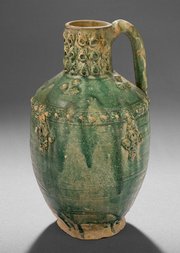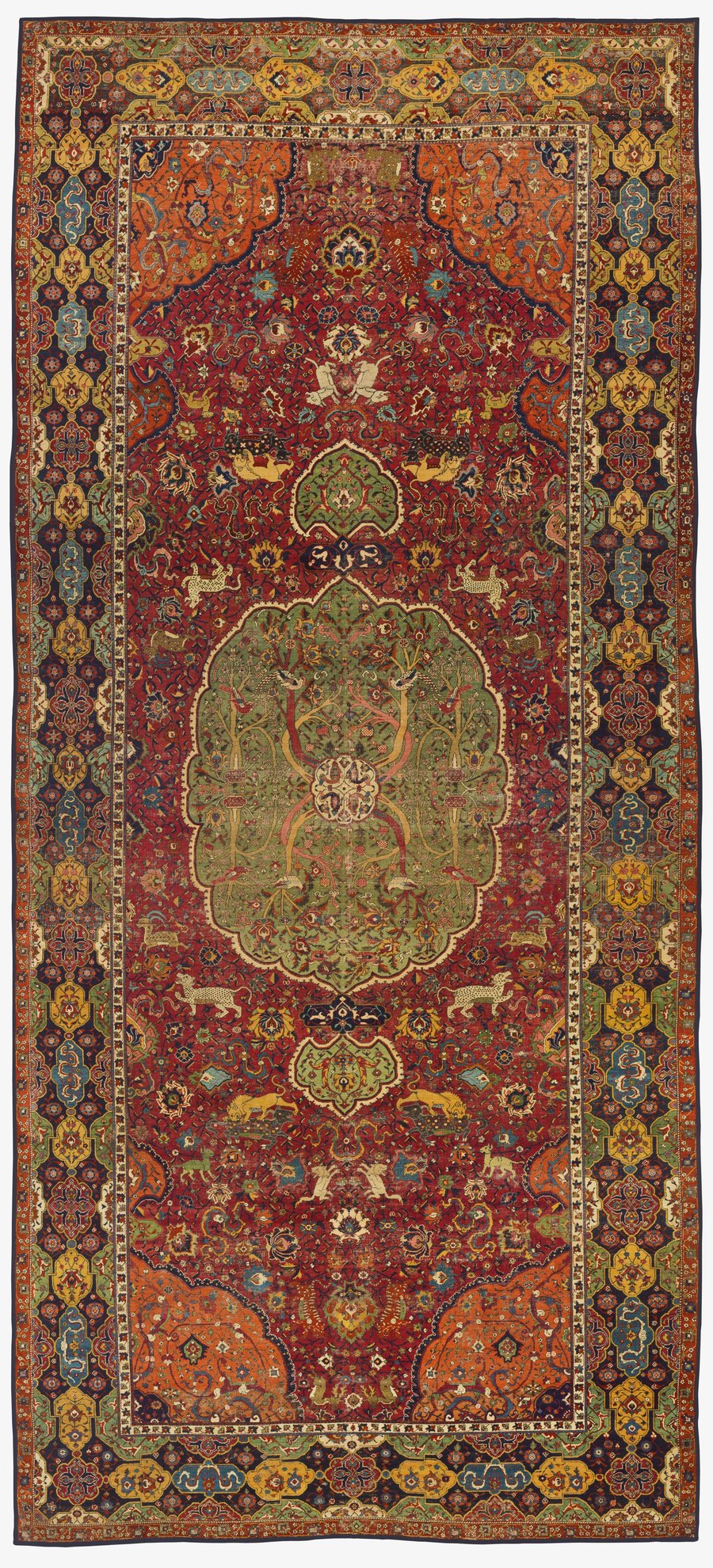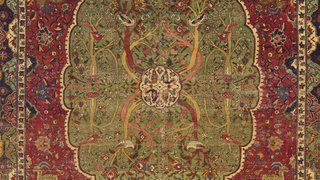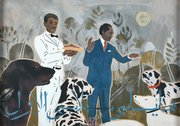
So-called 'Shah Suleiman-Morosini Hunting Carpet'
Museum of Islamic Art
- Title:
- So-called 'Shah Suleiman-Morosini Hunting Carpet'
- Production place:
- Iran
- Date:
- 1550 - 1650
- Period:
- Safavid
- Title:
- So-called 'Shah Suleiman-Morosini Hunting Carpet'
- Production place:
- Iran
- Date:
- 1550 - 1650
- Period:
- Safavid
- Material:
- Wool, Cotton
- Technique:
- Weaving
- Dimensions:
- 583 × 260.5 cm
Large, with a monumental yet harmoniously conceived design, and in remarkable state of preservation, this carpet known today as the "Shah Suleiman-Morosini Hunting Carpet" is a masterpiece of Safavid carpet knotting from the workshops of Tabriz, which was an important centre for the production of finely knotted carpets for the Safavid court and the elites during the 10th century AH/16th century CE. It presents a large design with a central lobed oval medallion with pendants and cartouches, and four cornerpieces in bright orange. The ground in deep red with blue undertones is filled with a motif of tendrils and animal hunting scenes, with big cats attacking and chasing gazelles and deers. The central medallion contains a water pond with ducks and blooming trees and entwined lotus blossoms populated with birds. The main border shows an idealy infinite pattern of interlocking and partially overlapping geometric forms filled with flowing cloudbands, ribbons, and flowers against constrating colour grounds. The inclusion of hunting animals into the design of a several 10th- and 11th-century AH/16th- and 17th-century CE Safavid carpets has led many authors to nickname them ‘animal’ or ‘hunting’ (as well as 'Paradise Park') carpets. The Shah Suleyman-Morosini carpet stands as a rare example for a very limited number of coeval carpets from Tabriz show a similar design.




